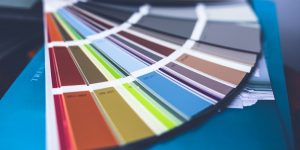We often meet people who wonder about the difference between UI and UX.
It is easy to get them mixed up, after all they almost always go hand-in-hand even though they are done by different parts of the development team. Their design process differs, and so does the end result.
By having a better grasp on these professions and what makes them unique and crucial for your product you have a higher chance of creating a product that your users will love.
Why everyone is talking about UX, and not UI anymore
The most direct and layman way of describing the main difference is to say that User Interface (UI) is how the application looks, and the User Experience (UX) how it feels to the user.
If we were to define this term from a humanistic point of view, we could say that the responsibility of a UX designer would be to understand the target user group, and to develop the product in such a way that it satisfies any and all requests and necessities thus offering a fantastic and memorable experience.
In the early days of app development, no one was used to investing a lot of time into thinking how people will feel while using their applications.
With the mobile and web markets developing at a staggering pace, companies started realizing that just delivering a product was not enough. Once all of a sudden, a lot of new factors came into play, and it was all regarding the user’s journey and experience while using a product. It was not long before having a user experience designer on the team became the norm.
The need for usability became stronger than the need for an attractive interface.
Having a good looking interface was not enough. The applications that were the most popular and had the most success were the ones that offered a great user experience. What was the cause for that became apparent to everyone in the industry.
Companies had to think differently about their product, more as something that will soon be used by a live, ever-changing audience than individuals without a face.
With a booming market, delivering on an outstanding experience is an imperative if you want your product to succeed. This ushered a humanistic era between companies and their users that resulted in mutual satisfaction – companies got direct feedback from their users which produced better products that their existing (and future) user base wanted to use.
What changed for online businesses.
New responsibilities for designers
The average user rarely takes the time to acknowledge when something is done in a great way, or to make a conscious distinction between UI and UX. They only know if it makes them feel good or not, and that is the way it should be.
That is the magic of it all, when hours of hard work and in-depth research result in something that to someone might seem like an easy thing to pull off, when in fact it was a team effort.
At times both of these fields should not be noticeable at first glance from your product. They should not be in the spotlight. You could compare it to a well edited film. If the editor did their job right, the average viewer will never notice it. However if the film was edited by an amateur, even the average viewer will feel that the rhythm is off, that the flow they were expecting between scenes just is not there.
The same can be said for UX. If it was done meticulously then it will be evident to the user.
They will feel that something is right.
On the other hand UI design brings us to the visual side of things. It is the job of a UI designer to work on the front-end of your service, creating consistent style guides, prototypes, research, sometimes working within a predetermined visual style either decided on earlier in the process or designing within the operating system’s visual guidelines. UI designers also need to guide the users using strictly visual elements regardless of the platform they are designing for. It is in a way directly connected to graphic design, and the end product is always completed strictly digitally.
Finding the right balance between UI and UX
In today’s marketplace where almost every app developer’s end product reached a satisfying level of quality – having an attractive facade just is not enough.
Having a great looking user interface without it being built upon a great user experience results in a cluster of visually stimulating elements. We might enjoy how it looks, but after the first touch or swipe we perform that pleasant sensation will quickly fade and transform into frustration.
At the same time, you should not expect all your users to stay if you offer them a great user experience that looks bad. Some will, after all not all of us need the same amount of visual stimulation, but it’s expected from people to judge a book by its cover.
You don’t want any number of users to be put-off by a bad user interface.
When you first use a finished product, you might like it for its user interface, its design, but you will almost always stay for the user experience it delivers – the ease of use, how fast it works, how it fulfills your needs, and how it in a way it understands you.
New KPIs of success for Interfaces
Measuring the effect your UX and UI has on your users is incredibly important because it leads to gathering crucial information which can lead to improvement.
Your product is also never complete in a way. User requirements alter with time, and so does the nature of your business.
The design of your product is not something that should be done only once – it should improve over time and adapt with the changing times. In order to know what to change and when, you have to develop ways to measure and manage, and be aware that there are various indicators for each segment, in this case for both UI and UX.
Through these indicators you can also get a better understanding in the practical difference between UI and UX.
When you launch your product, UX design can be measured in a myriad of ways but most notably in your KPI (key performance indicators) retention rates, or in other words the ability of your product to retain customers/users over a prolonged period of time.
Here are some of the ways to measure your UX using a couple of user-centric indicators:
-
Task entry rate – who in your users/customers is using or not this feature
-
Task success rate – a percentage showing the amount of success your users have when completing certain tasks within your application
-
Task time to complete – measures time needed to complete a task as well overall efficiency
-
Task use in time – measures the average usage and its evolution in time
For measuring UI you should adhere to a somewhat different set of KPIs, although they can sometimes overlap:
-
Site/app load speeds – the speed needed to complete open a page or move from one part of your service to another
-
Time spent on input forms
-
Navigation and layout, User Dispersion – if your users are not getting to where they need to be, your site/app’s organization might be the problem
Different projects require different measurements. Always focus on reliable inputs and always add context to your metrics.
Can your UI / Web designer also be your UX designer?
Designers should be experts in their own field (UI, UX ..) but at the same time have at least a basic knowledge of the other one.
UI designers should not just think in visual terms, they should have a deep understanding on how the user will feel when using their interface. Their process should be filled with a series of conscious decisions in order to enrich the overall user experience.
Most UI designers come from a background that is built on the principles of graphic design. They tend to focus on the visual side of things and often stick to that. It is still rarely seen in their job description, to think about the end user in such a way that they should anticipate their needs, or think about their journey through a project.
On the other hand, UX designers usually come from very diverse experiences. Most of the ones we know at Onvey agree on this idea:
UX design is 50% of common sense.
However both are complex fields, a UI / web designer with a user-centric sensibility, sense of responsibility, passion for product challenges, could also make the job of the UX designer.
As technology advances with time, so do the job descriptions and requirements for these fields. It is very likely that in the foreseeable future, the distinction between these 2 types of designers will vanish, as well as the difference between UI and UX will not be that visible anymore.

 Psychology of Choice applied to Web & App Design: Convince Clients!
Psychology of Choice applied to Web & App Design: Convince Clients! Brands: Joining Battle For Customers’ Hearts, Not Just Pockets
Brands: Joining Battle For Customers’ Hearts, Not Just Pockets The Buyer Journey: Nothing More Than a Series of Questions To Answer
The Buyer Journey: Nothing More Than a Series of Questions To Answer